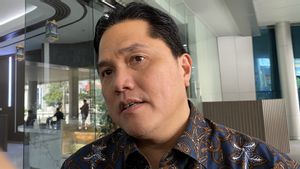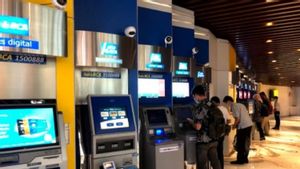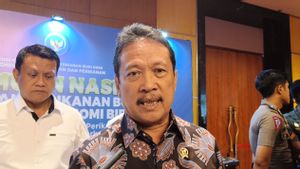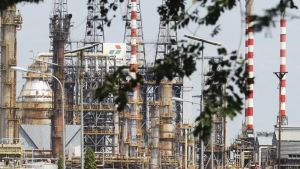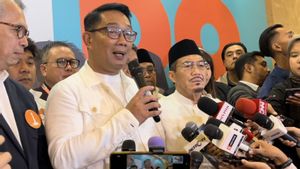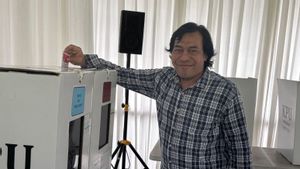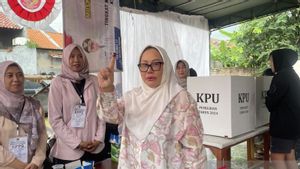JAKARTA - The recent worsening polemic regarding air quality in Jakarta has raised a collective awareness that clean air is a vital basic need for the public.
Head of the Center of Food, Energy, and Sustainable Development INDEF Abra Alattov said the high level of air pollution was not only a concern for Jabodetabek residents, but also in the spotlight of various foreign media until Jakarta was lined up as one of the most toxic cities in the world.
"With the deteriorating air quality, apart from being able to endanger the health of residents, it also has the potential to hinder people's social and economic activities," he told the media, Wednesday, August 16.
Abra regretted that there was a debate about the source of the dirty sky in Jakarta when the health of the residents was threatened. In fact, according to him, the quality of Jakarta's air can be seen that it is greatly influenced by the occurrence of post-pandemic community mobility.
We remember very well during the pandemic when people were mostly at home, the Jakarta sky seemed so bright and clean. However, now that Jakarta's economy is starting to stretch and the streets of Jakarta are starting to get crowded with motorized vehicles, Jakarta's air feels stuffy surrounded by smoke.
This is confirmed from data from the Ministry of Environment and Environment (KLHK) that the main contributor to major air polluters in Indonesia is the transportation sector with a portion of 44 percent, followed by the industrial sector with 31 percent.
The allegation that the transportation sector contributed significantly to Jakarta's air quality and was also confirmed by the growth of GDRB in the transportation sector in Jakarta, which grew at the highest reaching 18.1 percent in the second quarter of 2023.
"The transportation sector as the cause of Jakarta's air pollution is certainly increasingly worrying given the high growth in the population of fossil-based motorized vehicles in Jakarta," said Abra.
In the last 5 years, he explained, the population of passenger cars in Jakarta has increased by 15.5 percent to 4.13 million vehicles. Meanwhile, the motorcycle population increased to 27.8 percent to 19.22 million vehicles.
"This means that with an average fuel consumption in Jakarta for motorbikes of 0.92 liters per day and 3.9 liters of cars per day, the total fuel consumption in Jakarta can reach 17.8 million liters per day for the entire motorcycle population and 16.2 million liters per day for the entire population of cars," he explained.
With 1 liter of fuel carbon emissions equivalent to 2.4 kg of CO2e, Abra stated that the estimated total emissions generated from the total population of motorcycles and passenger cars in Jakarta reached 81.17 million kg of CO2e.
"By realizing the magnitude of carbon emissions produced by fossil-based vehicles, it should be a momentum for transformation towards a clean transportation ecosystem," he added.
To reduce carbon emissions from the use of private vehicles, Abra encouraged the government to focus on providing comfortable and affordable mass transportation.
"Even to encourage even more massive use of public transportation, the government should consider reallocating part of the fuel subsidy budget for public transportation rates," he said.
In line with that, Abra assessed that efforts to reduce carbon emissions in the transportation sector were also carried out by encouraging the shifting of fossil-based private vehicles into electric-based vehicles.
He assessed that the transition to using electric-based vehicles could cut more than half of carbon emissions compared to fossil-based vehicles, which is equivalent to 1.2 CO2e per 1.2 kWh of electricity with the composition of the energy mix of power plants like today.
With the fiscal incentives currently provided by the government in the form of VAT pieces for the purchase of electric cars and electric motor subsidies, Abra hopes that these facilities can attract people to switch to electric vehicles.
Of course, to attract more public interest in using electric vehicles, the government must ensure the availability of supporting infrastructure for electric-based vehicle ecosystems such as Public Electric Vehicle Charging Stations (SPKLU) and Public Electric Vehicle Battery Exchange Stations (SPBKLU).
In addition, Abra also encouraged the government to show a commitment to maintain the reliability of power plants with clean technology through changes in people's lifestyle to clean, electricity-based transportation.
He emphasized that the government must be consistent in ensuring that the energy transition in the electricity sector is in accordance with the 2021-2030 RUPTL where the portion of PLTU to Indonesia's energy mix is targeted to decrease from 67 percent in 2021 to 59.4 percent in 2030.
In addition, continued Abra, related to the PLTU operating at the western end of Java Island, the government must also guarantee that the PLTU has been equipped with a continuation of the monitoring system (CEMS) so that the government can monitor the emissions issued by the PLTU.
"This is a form of transparency to the public that the transformation of clean transportation is supported by power sources from power plants with clean technology," he concluded.
The English, Chinese, Japanese, Arabic, and French versions are automatically generated by the AI. So there may still be inaccuracies in translating, please always see Indonesian as our main language. (system supported by DigitalSiber.id)



